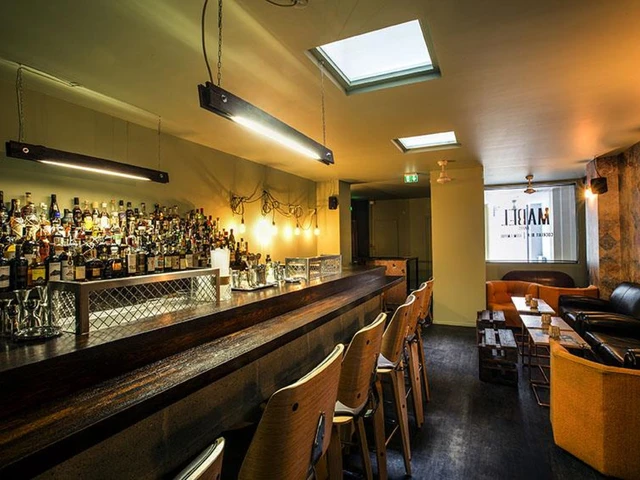Introduction to the Call Girl Industry in Berlin
As a blogger with a keen interest in the history of the call girl industry, I have always found the evolution of the profession in Berlin particularly fascinating. Over the years, the city has seen a shift in the way call girls have operated, adapted and evolved, making it an interesting case study for anyone interested in the topic. In this extensive article, we will explore the history of call girls in Berlin, touching upon various aspects that have shaped the industry over the years.
The Early Beginnings: 18th and 19th Centuries
The origins of the call girl industry in Berlin date back to the 18th and 19th centuries, when women from lower socio-economic backgrounds turned to the profession as a means of survival. At this time, prostitution was not a regulated industry, and women would often work independently or through informal networks. The rise in the number of call girls at this time can be attributed to factors such as economic hardship and the influence of the French Revolution, which led more women to seek ways to support themselves financially.
During this period, the Prussian state was quite tolerant towards prostitution, and brothels were allowed to operate freely. However, this did not mean that call girls were free from societal stigma or legal troubles, as they often faced social ostracism and occasional crackdowns by the police.
The Regulation Era: Late 19th and Early 20th Century
As we move into the late 19th and early 20th century, the call girl industry in Berlin experienced a significant shift with the introduction of regulations. In an attempt to control the spread of sexually transmitted infections and protect the well-being of sex workers, the German government introduced the "Regulation System" in 1871. This system required call girls to register with the police and undergo regular health check-ups.
While this system was established with good intentions, it had several negative consequences. Firstly, it further stigmatized call girls, as they were now part of an official registry, and secondly, it led to the emergence of an underground industry where women operated illegally to avoid registration. This period also saw the rise of brothels, which provided a more discreet and safer environment for both call girls and their clients.
The Weimar Republic: A Golden Age for Call Girls
The Weimar Republic (1918-1933) proved to be a golden age for call girls in Berlin. During this time, the city experienced an influx of artists, writers, and intellectuals, which contributed to a more liberal and open-minded atmosphere. This, coupled with the economic hardships faced by many Germans, led to an increase in the number of women entering the call girl industry.
Moreover, the Weimar Republic saw the emergence of more organized and sophisticated networks within the call girl industry. This era also marked the birth of the modern call girl, who was more educated, well-traveled, and cultured than her predecessors. These women offered not just sexual services, but also companionship and intellectual stimulation to their clients, making them highly sought-after in the elite circles of Berlin society.
The Third Reich and World War II
The rise of the Nazi regime in 1933 marked a dark period for the call girl industry in Berlin. The Nazis viewed prostitution as a moral degeneracy and sought to eradicate it from society. As a result, many call girls were persecuted, imprisoned, or forced to flee the country. Additionally, many brothels were shut down, and the regulation system was dismantled.
However, the call girl industry did not completely disappear during this time. Some women continued to work secretly, and there were even reports of high-ranking Nazi officials making use of their services. Furthermore, during World War II, the German military set up a network of state-controlled brothels to provide sexual services to soldiers, which only served to highlight the hypocrisy of the Nazi regime.
Post-War Berlin: A City Divided
The end of World War II and the subsequent division of Berlin into East and West brought about significant changes to the call girl industry in the city. In East Berlin, under the communist regime, prostitution was strictly forbidden, and women found engaging in the profession faced severe punishments. However, in West Berlin, prostitution was tolerated, and the industry continued to thrive, albeit in a more underground manner.
During this period, West Berlin became a hub for sex tourism, with many men from other parts of the world visiting the city to enjoy the sexual freedom and services offered by its call girls. Additionally, the economic hardships faced by many in the divided city led more women to turn to the industry for financial support.
The Reunification of Germany and the Modern Call Girl Industry
With the reunification of Germany in 1990, the call girl industry in Berlin experienced a revival. The legal status of prostitution in Germany was once again debated, and in 2002, the German government passed the Prostitution Act, which decriminalized the profession and granted sex workers the same rights and protections as other workers.
Today, the call girl industry in Berlin is a far cry from its early beginnings. The industry is now more organized, regulated, and professional, with many call girls operating independently or through well-established agencies. The stigma surrounding the profession has also lessened, although it still persists to some extent. Nevertheless, the evolution of the call girl industry in Berlin serves as a testament to the resilience and adaptability of the women who have been a part of it for centuries.
Conclusion
Tracing the history of call girls in Berlin provides us with valuable insights into the changing social, political, and economic landscape of the city, as well as the shifting attitudes towards sex and sexuality. From its early beginnings in the 18th century to the modern, regulated industry that it is today, the call girl industry in Berlin has undergone significant transformations, reflecting the resilience and determination of the women involved in this profession. As we continue to explore the evolution of the call girl industry in cities around the world, we must not forget the important role that these women have played in shaping our understanding of sex work and challenging societal norms.










Write a comment